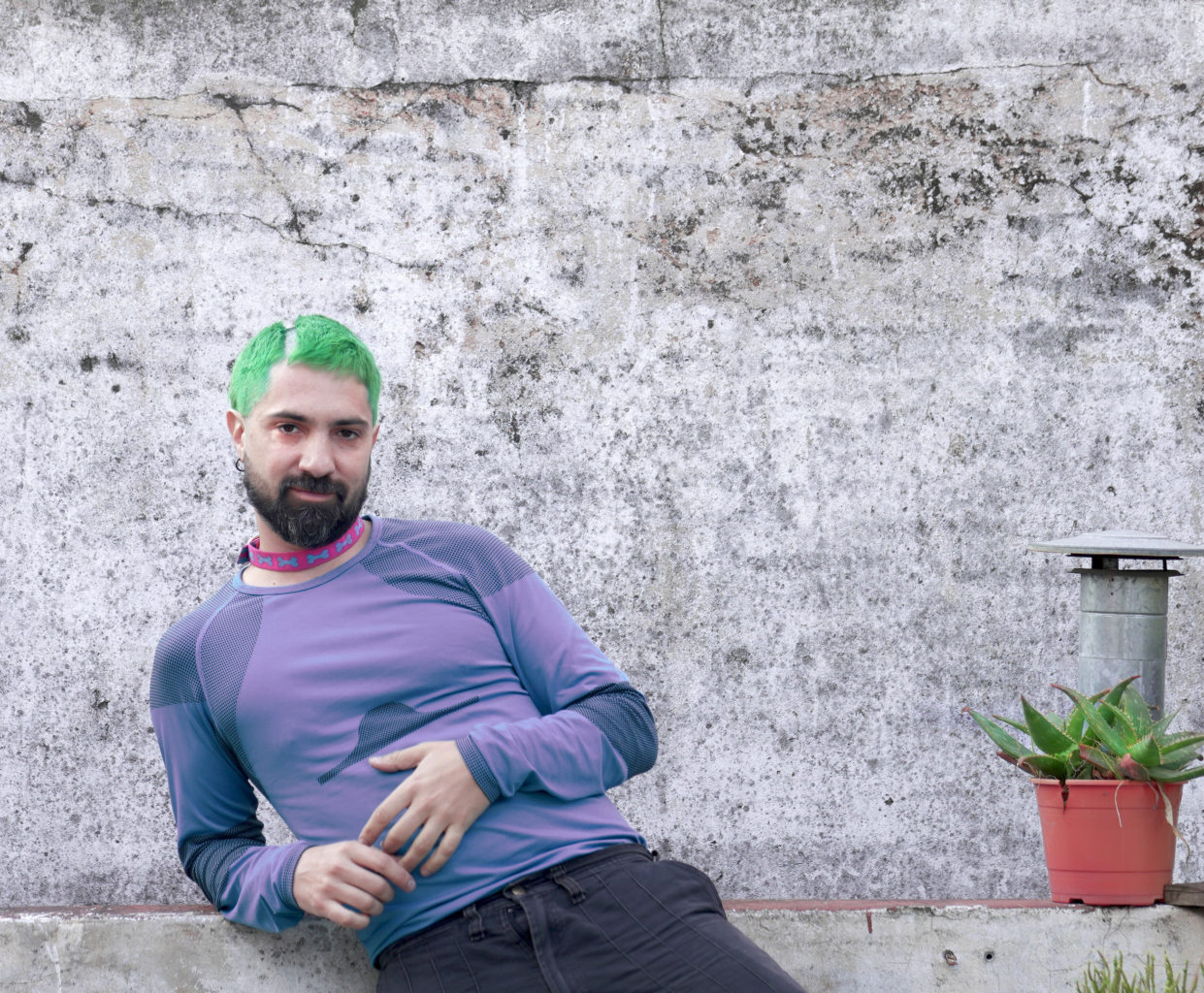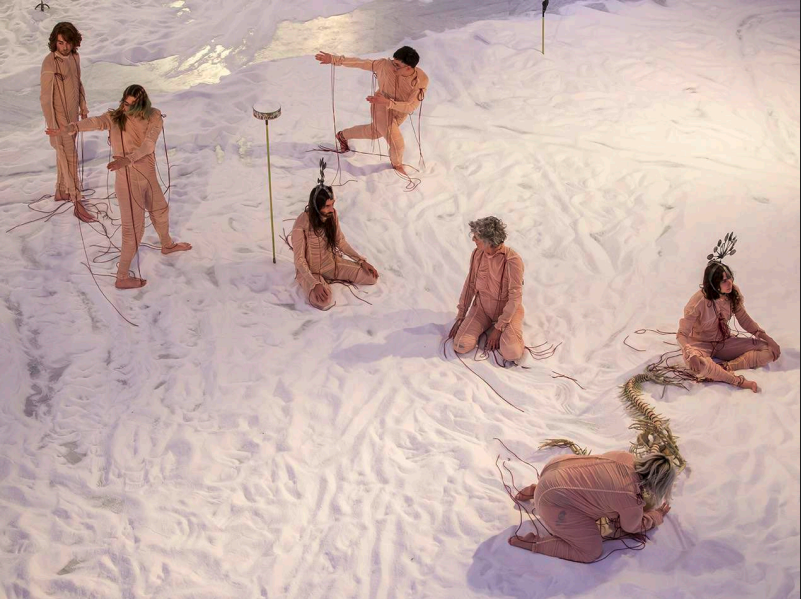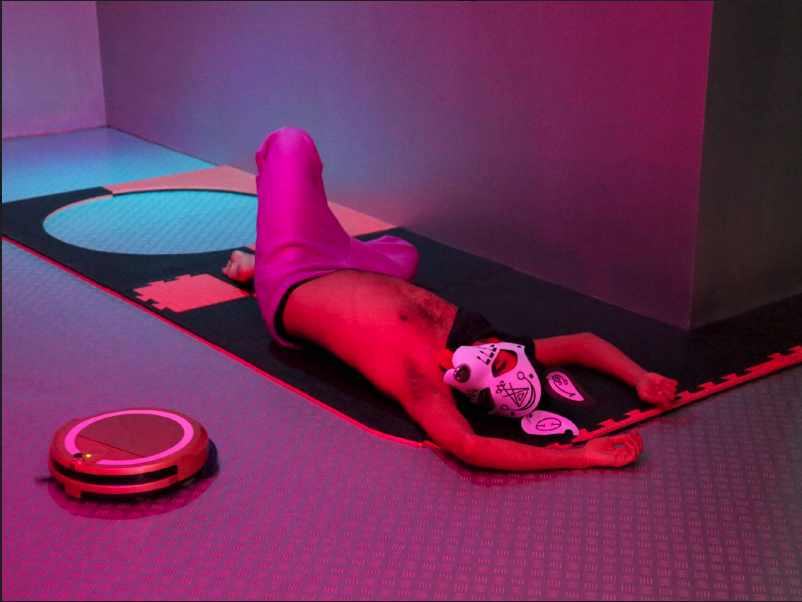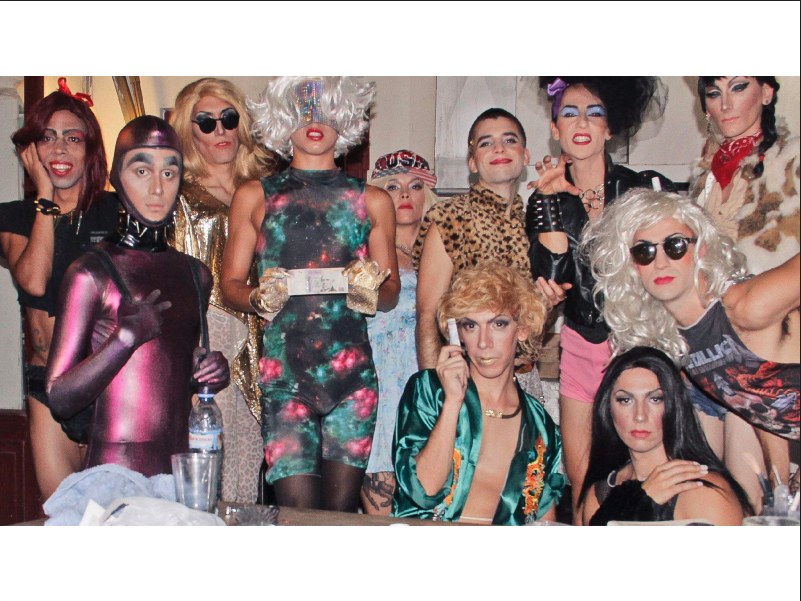"With this project we seek to exacerbate common fantasies outside the imposed ones".

Interview with the Argentinian artist Osías Yanov, who will organise the 'Diversorium, living arts and space for coexistence' in Barcelona in 2022.
Con una práctica multidisciplinar que combina celebración, instalación, escultura y vídeos, el artista argentino, Osias Yanov, es el artista elegido para organizar el ‘Diversorium, artes vivas y espacio de convivencias’, del que os iremos avanzando fechas y lugar próximamente. Yanov, -con una práctica artística que se resiste al control estereotipado de la subjetividad e intersecciona con la teoría queer, fiestas nocturnas o los trabajos grupales-, está ya en pleno proceso de producción junto a los comitentes, María Oliver y Antonio Centeno, y la mediadora del proyecto de Barcelona, Veronica Valentini. En esta entrevista, hecha desde su estudio de Buenos Aires, nos cuenta un poco más cómo está siendo este proceso.
Concomitentes: Tu obra se encuentra en el umbral híbrido entre lo performativo y la escultura. ¿Cómo defines tu trabajo y qué persigues a través de tu obra?
Osias Yanov: En mi trabajo lo performativo y la interrelación con otros colectivos se orienta a percibir las sensibilidades que aparecen al movernos en grupo, es decir, qué experiencias emergen en un cuerpo extendido más allá del individuo. Un desarrollo de prácticas de asociación grupal donde a veces se friccionan las nociones de género, sexualidad, clase y edad para transformarse en otra cosa.
C: Tu práctica y el Diversorium tienen muchas cosas en común: el encuentro de los cuerpos, de la fiesta, de lo performativo, la intersección entre distintos tipos de seres. ¿Cómo recibes esa invitación de la mediadora Vero Valentini a formar parte del proyecto?
OY: Esta propuesta viene a continuar en lo que ya desde hace mucho he venido profundizando: considerar la fiesta como un espacio de sociabilidad, celebrar el goce, la sensualidad y la sexualidad como actos más allá de lo personal. La fiesta no es una ceremonia individual sino una posibilidad pública y política, que se genera en grupo y que lo atravesamos desde las disidencias como actos sensibles, transformadores y de refugio.

C: Has mencionado que estás acostumbrado a trabajar y a conectarte con otros cuerpos, ¿cómo te inspira esta forma de trabajo de Concomitentes basada en la participación, la escucha y el intercambio?
OY: Me pasa una situación contradictoria. Por un lado, no me siento cómodo en dar una solución a una necesidad a través de mi obra. Es una figura compleja, sin embargo, me resuena la idea de situar herramientas e instrumentos que vengo desarrollando en diálogo con una comunidad.
C: ¿Cómo es sociabilizar esas herramientas de lo artístico para un proyecto como éste?
OY: Creo que desde dentro del proyecto lo entendemos así, sociabilizar herramientas para facilitar procesos. En este proyecto buscamos interrogarnos entre todas: ¿Cómo posibilitar el encuentro entre personas con y más allá de nuestras estructuras y diversidades?
C: En este proceso, ¿cómo está siendo el trabajo de la mano de unos comitentes, tan comprometidos y activistas, como María Oliver y Antonio Centeno?
OY: Es un trabajo interesante y que entrama los ángulos del activismo, la política y la economía. Y que, desde lo artístico, puede ser material para proponer nuevas subjetividades que desmontan eso que nos machacaron como normal y que nos oprime. En este contexto, el trabajo con Antonio y María se orienta en ver qué cosas hay que desmontar y qué subjetividades hay que hacer emerger en el vínculo que se crea entre diversidad funcional, goce y fiesta.

C: Como con el proyecto, ¿has encontrado con ellos puntos de vista comunes?
OY: Coincidimos en que la fiesta, el goce, la sexualidad es una instancia política y que hay que situarla en primer plano. Con este proyecto, buscamos exacerbar fantasías comunes a todes, por fuera de las que nos vienen impuestas. Así es que este diálogo se monta para hacer emerger esos deseos y llevarlos a una propuesta material.
C: ¿Qué propuesta artística estás manejando?
El proyecto se volvió múltiple y extenso, incluyen encuentros performativos, prácticas de movimiento, situaciones escultóricas y utilización de vestuarios que se intensifican con las participantes.
C: ¿Y cómo está siendo trabajar en una propuesta con tantas aristas, desde Argentina y con tiempos tan ajustados?
OY: Prefiero los proyectos que no son eternos. Que propongan simultaneidad de acciones y no centros. Que trafiquen información entre distintas latitudes.
C: ¿Cómo gestionarás la gestión logística de la producción artística estando tú en Argentina?
OY: Justamente son estos días en los que estoy trabajando esa agenda. Por temas prácticos ciertas piezas e inclusive algunos pequeños ensayos generales se van a hacer en Buenos Aires. Voy a viajar 1 mes antes del festival para acercarme al espacio y definir con quiénes trabajar.
C: ¿Te emociona que se vea tu trabajo al otro lado del charco?
OY: Al principio me asustó bastante, por la escala del evento que pasó de ser fiesta a festival y la complejidad que asumimos al entender que queríamos romper la jerarquía del escenario respecto a la de la platea. Unificando todo en un mismo acontecer coreográfico y de sentido entre el arriba y el abajo. Las acciones de esta obra se sitúan en la intersección entre escenario y espacio público.

C: ¿Y cómo lograr eso a través de una obra de arte?
OY: Hay algo del festejo a la interdependencia que me gustaría que suceda y que vamos a practicar mediante el uso de vestuarios, objetos y movimientos que sensibilicen y sensualicen las conexiones entre cuerpos.
C: Parece un reto aunar estas fantasías comunes, estos sueños, y concretarlos en algo material…
OY: Existen muchos estratos en este proyecto, desde la facilidad de acceso a la llegada a una fiesta hasta como convivimos en ella. Ir acercándonos hacia este espacio desde el deseo me parece importante.
C: ¿Podrías explicarnos un poco más cómo utilizas esas exploraciones de la sexualidad dentro de lo artístico?
OY: Tratar de derribar lo “normal” es siempre un trabajo molesto, porque quienes nos consideramos subalternos, lo hacemos desde el corrimiento de no querer ser ese “normal”, al mismo tiempo que somos señalados por estar corridos. Esa clase, entre otras, de represión social achica nuestros cuerpos. Explorar la sexualidad física o conceptualmente desde prácticas, ejercicios, juegos, pieles, performances o maneras de contactos conspira contra la normatividad y permite la irrupción de otros imaginarios dónde ir haciendo lugar.










 Concomitentes
Concomitentes